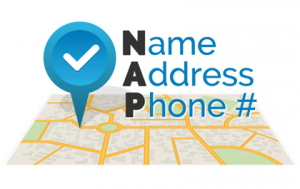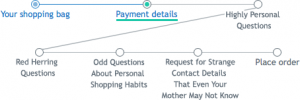Several times every week we have conversations with customers about measurement, metrics, dashboards and scorecards. Given that today, almost everyone is able to click on some kind of Martech or CRM tool and produce a data report, you might wonder why this topic keeps surfacing? Because CMOs and by extension the C-Suite continue to be disappointed with their performance management and ability to produce actionable results given the investments in analytics.
 As a result, many Marketing leaders find themselves struggling to answer critical questions from the executive suite and business leaders on how Marketing is contributing and impacting the business. How to craft a dashboard that passes the C-Suite taste test is the focus of this episode of One Good Idea.
As a result, many Marketing leaders find themselves struggling to answer critical questions from the executive suite and business leaders on how Marketing is contributing and impacting the business. How to craft a dashboard that passes the C-Suite taste test is the focus of this episode of One Good Idea.
As we ask questions during these conversations, one common theme we’ve noticed is that many people often confuse campaign scorecards and actionable dashboards. While both serve as valuable performance management and accountability vehicles, they are different. Before we offer up an idea to improve a dashboard, let’s clarify the difference between these two.
We’ve used this analogy of a round of golf to explain the difference. We’ll recap it here. Campaign scorecards are akin to the scorecard you might use for a round of golf. The scorecard tells you where the hole is on the course and what performance target, that is “par” is for that hole. As you play you keep track of your actual performance, that is your score, for each hole. At the end of the round, you can see how you fared compared to the performance target and against any competitors you played with. You have a scorecard. You won’t know why you achieve that score, that is, did you have too many putts once you were on the green or too many shots out of bounds.
Dashboards help you understand the WHY behind your score and what you can do to improve or manage your performance.
Marketing campaigns should have scorecards. One way is to set up the scorecard with performance targets for CTAs tied to the customer buying journey.
If scorecards are great for campaigns, are dashboards merely a summary of campaigns?
No.
Think about a dashboard in your car. It is not a summary of your driving trips. While it might be how many miles the car has traveled, the different gauges are used to keep us informed, in real-time, about how the car and we are performing.
The speedometer is there to help us stay within the posted speed limit. We might choose to speed but if we get a speeding ticket we’ll know why. Same with our fuel gauge. It is there to keep us informed of the fuel status, so we don’t end up on the side of the road.
The message here is that the dashboard is not keeping score, it is providing information to help guide decisions.
The data inside a marketing automation platform or CRM system is often more like a scorecard than a dashboard. AND this data can be used in the construction of the dashboard.
You’ll Craft a Better Dashboard When You Add This Secret Ingredient
 Many of the dashboards we see are comprised of a mishmash of data which makes performance management challenging. Data taken from a variety of systems, but none that necessarily provide insight into what is working and how Marketing is impacting things like customer value, customer acquisition, customer retention, product adoption, the share of preference, and so on. It seems like a business dashboard, like one Marketing, should work like the car dashboard, where all parts tell the driver what is currently going on with the vehicle. How fast, temperature levels, tire pressure, etc. From these measures, a driver can adjust and make good decisions based upon what their dashboard informs them.
Many of the dashboards we see are comprised of a mishmash of data which makes performance management challenging. Data taken from a variety of systems, but none that necessarily provide insight into what is working and how Marketing is impacting things like customer value, customer acquisition, customer retention, product adoption, the share of preference, and so on. It seems like a business dashboard, like one Marketing, should work like the car dashboard, where all parts tell the driver what is currently going on with the vehicle. How fast, temperature levels, tire pressure, etc. From these measures, a driver can adjust and make good decisions based upon what their dashboard informs them.
This takes us to our smart tip for dashboards. The “secret ingredient” to creating a dashboard.
Here it is – logic chains.
Not sure what this secret ingredient is or how to make it?
If you’re familiar with the amazing Indian spice referred to as Garam Masala, you know that this spice is actually made up a variety of spices! Logic chains are like Garam Masala. They are made up of measures and metrics that can form a logical chain.
Therefore, creating an actionable dashboard is about more than data quality. It’s about selecting the right measures and metrics that enable you to connect the measures and metrics to each other and the business result they impact.
Business & Finance Articles on Business 2 Community
(12)






